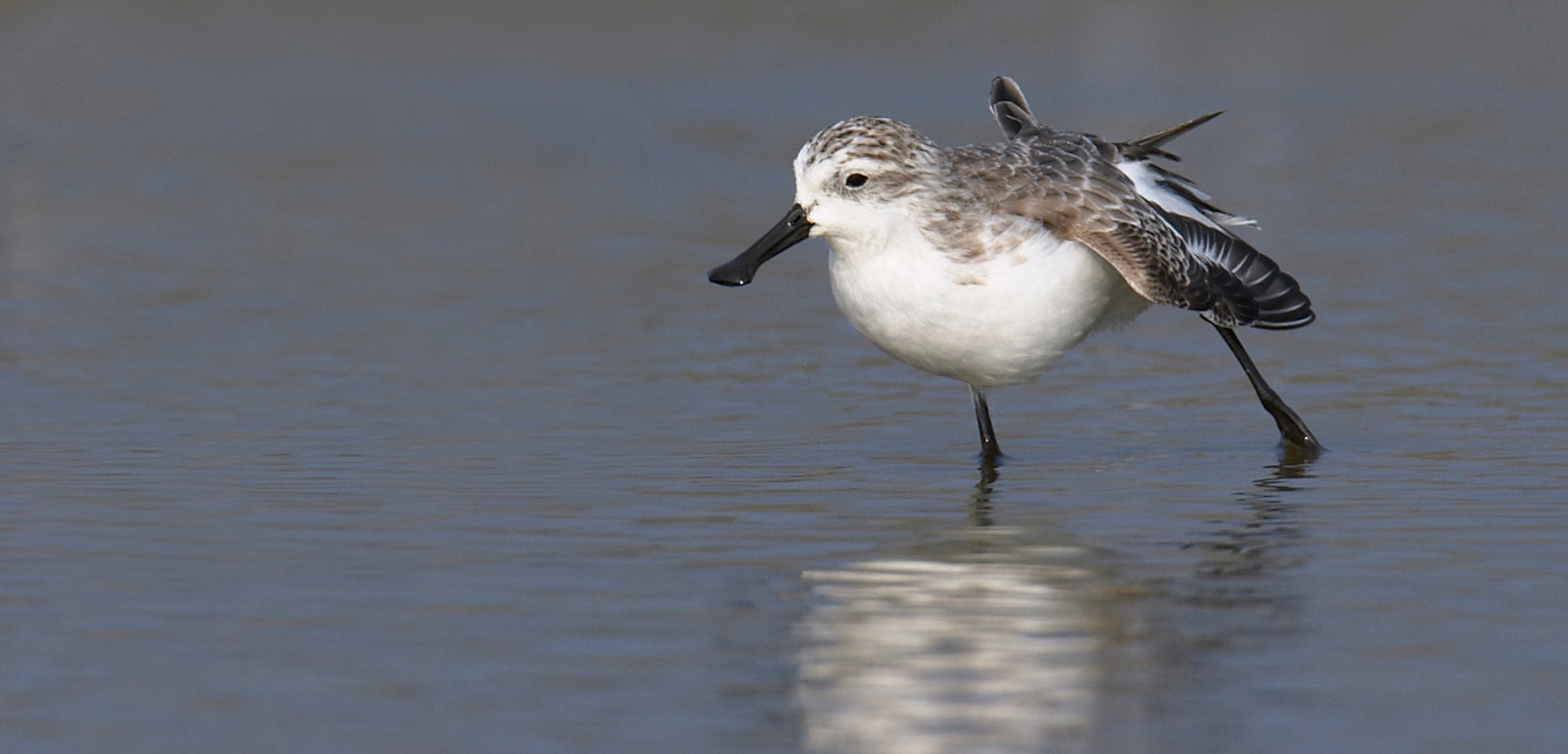Decline of Salt Farming Leads to Shorebird Shakeout
A key habitat for migratory birds, salt pans are threatened by shifting industrial priorities.
Article body copy
Habitat loss from human development is taking a toll on migratory shorebirds around the world, with nearly half of the known populations in decline. While many of these birds have been finding refuge in man-made salt pans—long, muddy depressions of shallow seawater used in salt farming—this habitat is also disappearing.
For at least a century, the inner Gulf of Thailand has been home to one of the world’s biggest salt farming industries, and thus a haven for hordes of wintering shorebirds. Up to 500,000 shorebirds of 56 species (of which at least 20 are of international conservation importance, including 12 endangered species) roost in the shallow pools of these salt pans and feed on the small crustaceans beneath the mud, making the 160-kilometer-long inner gulf one of the most important shorebird areas on mainland Southeast Asia. But now a shift away from salt farming threatens to change that.
Thanks to an increase in coastal land prices and a steady decline in the global competitiveness of Thai salt, landowners and farmers are getting into aquaculture and development projects. For example, the Khok Kham salt farming cooperative, located south of Bangkok, may be replaced by a Singaporean solar farm. Khok Kham is one of two designated shorebird reserve network sites under the East Asian-Australasian Flyway Partnership in Thailand, and home to one of the most imperiled shorebird species in the world, the spoon-billed sandpiper. (Today, there are thought to be no more than 120 breeding pairs left worldwide and their population has declined by 90 percent over the past three decades.)
While the Khok Kham site is awaiting confirmation as a wetland of international importance under the Ramsar Convention, the solar farm was still given the green light by the Energy Regulatory Commission of Thailand in October 2015. The project has, however, been paused while discussions on moving the 700-hectare solar farm continue between conservation groups and the government. While the salt pan has already been bulldozed over, it could be rebuilt.
“If there is no salt pan anymore [in Khok Kham], it will greatly reduce the areas where these birds will feed and they might not survive,” says Ayuwat Jearwattanakanok of the Bird Conservation Society of Thailand, a partner of Bird Life International, who is lobbying the government to move the solar farm.
“[The spoon-billed sandpiper] will only survive by dint of some strenuous human intervention,” says Philip Round, an ornithologist at Bangkok’s Mahidol University who studies the inner gulf. “It may be that some of these birds will disperse elsewhere and find another place to roost but the fact is that they’re all living on borrowed time, not just here but all along the flyway. It’s kind of like death by a thousand cuts.”
Round sees the solar farm as merely one example of a flurry of development projects in Thailand’s ongoing “piecemeal nibbling away of the coast.” The solar project, because it is on protected land, would set a “dangerous precedent” for other protected sites, he says. Moreover, while some gulf farmers may value conservation, for many, such as the man who sold his land to the Singaporean solar company, it is simple economics.
Sakchai Netlomwong, the leader of the Khok Kham salt farming cooperative, says that while the price of salt has dropped nearly every year, land prices continue to rise and much of the younger generation does not want to farm salt. Since 1937, when the Khok Kham cooperative formed, the number of salt panning families has dropped from 300 to just 28 today. Similar patterns are being observed across the gulf, says Round, who, alongside other researchers, has conducted surveys on land use across most of the coast. For the shorebirds that have long taken refuge there, it is grim news indeed.

